| Please access the following URL if you want to secure using SSL. All pages in the site will be secure pages. |
https://secure02.blue.shared-server.net/www.fish-food.co.jp/message english 6.2021.html |
Welcome to FISH FOOD TIMES
Jun. 2021 issue No.210


Very big largehead hairtail
Reflection on myself who made a mean throw 15 years ago
In the May 2006 issue, which we haven't given a volume number yet, I took up the theme of largehead hairtail. At that time, regarding the content described on this homepage, the author's true intention was that "I basically don't want to disclose a lot of know-how." I don't dare to describe the core point, but I remember that I calculated that it would be possible to cultivate new customers in the wake of the need to know the innovative part if possible.
However, over the next 15 years, 180 times have been accumulated, and this month it has become 210, and the feeling of calculating such a stingy thing has already disappeared. Now, the author is giving top priority to how to enrich the content that is updated every month.
In that case, when I reviewed the contents of the back numbers that I had written up to about 5 years after launching FISH FOOD TIMES, compared to the recent ones, it was not omission, but the explanation was insufficient. And I regret that I should have written more at that time. Especially for the May 2006 issue of largehead hairtail, I left it for 15 years with a nasty throw at the reader, which was a regret.
Therefore, in this month's issue, I would like to start by describing this concern in order to refresh the author's feelings.
At that time, 15 years ago, I was asking the reader if I could understand how the following "large head hairtail hyoshigi sashimi" was created. And I just wrote the words in the table below, and ended up without explaining it.
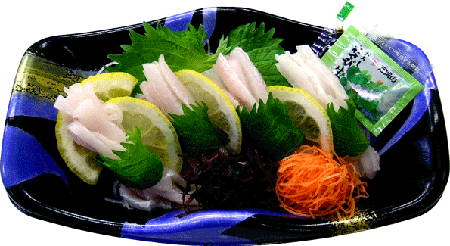
"Fish Food Times" does not dare to express the key points any more. It's because "I don't think it's a good thing" to talk about everything. It sounds mean, but it's surprisingly easy, so check it out for yourself. |
If you know this, you can skip the following, but if you don't, please refer to the following.
| Work process of largehead hairtail hyoshigi sashimi |
|---|
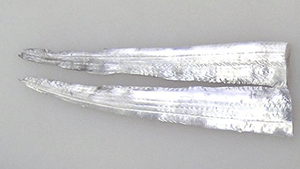 |
| 1,The thicker the head hairtail, the more delicious and valuable it is, while the slender and thin tail is less valuable. Use this tail part to make hyoshiki sashimi. |
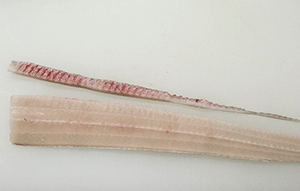 |
| 2,The muscle at the base of the long fin is the part corresponding to the wakaremi of tuna, which is also used as a material for sashimi. Of course, there should be no bone left. |
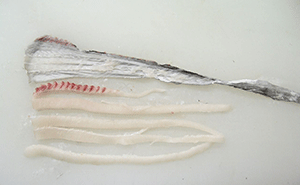 |
| 3,It removes the skin, but the largehead hairtail's skin is thin and easy to cut, so it's not easy to finish it well. The body part is divided into four layers of rod-shaped squares, which can be easily disassembled with fingers. Including the part of the fish, the total number of elongated fish meat is five. |
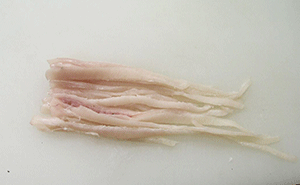 |
| 4,Collect the separated rod-shaped square fish meat and cut it to a length of about 1 sun (about 3 cm). |
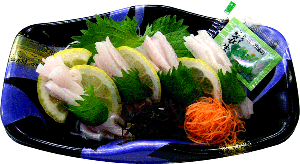 |
| 5,Collect 5 to 6 pieces of fish meat cut into 1 sun, roll them with perilla cut in half, and serve them to complete hyoshigi sashimi. |
Hyoshigi sounds at the same time as the shout "Beware of door locks, beware of fire" when looking around at night, and in sumo wrestling, it is also known to hit this when calling sumo wrestlers. It is a tool. As the square of the form in the rod-like is similar to that, this sashimi seems to have named hyoshigi.
Now, I've solved the kind of regret that I've had for 15 years. From now on, let's describe the largehead hairtail with a new feeling, including the parts that I did not dare to express even though I had knowledge about the largehead hairtail at that time.
Largehead hairtail catch decreased
In 2006, when the last article on largehead hairtail was published in FISH FOOD TIMES, it is recorded that largehead hairtail had a catch of 16,099 tons nationwide. And the latest 2019 data is 6,374 tons, a decrease of nearly 10,000 tons, and the catch is less than half. On the contrary, going back further in the past, the catch was 68,307 tons in 1967, the peak of the catch, so the catch of largehead hairtail is less than one tenth of that at that time.
In 2019, largehead hairtail catches overseas were 920,000 tons in China, 220,000 tons in India, 60,000 tons in Indonesia, and 30,000 tons in South Korea. Especially in South Korea, the largehead hairtail is called "culti" and is positioned as a high-class fish that is popular among the people.
The image below was taken when I traveled to Busan, South Korea in 2015.
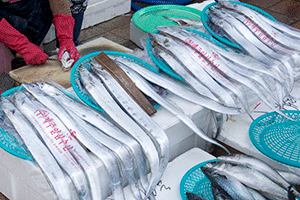
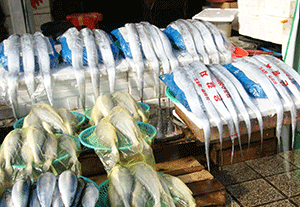
| Largehead hairtail sales scene at Jagalchi fish market in Busan, South Korea |
|---|
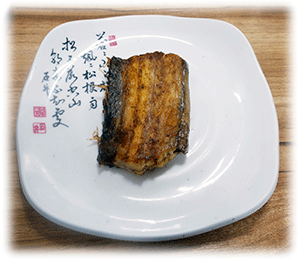
| Deep-fried largehead hairtail in the cafeteria on the 2nd floor of Jagalchi Fish Market |
|---|
One of the causes of resource depletion in Japan, where the catch of largehead hairtail has decreased to one tenth of the past, is that if largehead hairtail is exported to South Korea, even small fish aged 1 to 2 will sell higher than in Japan. Therefore, it is said that overfishing was carried out all over the country, including the size of spawning hairtails, as if the largehead hairtail was exhausted.
And, whether the South Korea had to why import largehead hairtail from Japan. The cause is that China has continued to catch a large amount of about 1 million tons a year at good fishing grounds with large head hairtails such as the Yellow Sea and the East China Sea. As a result, the landing of largehead hairtails has decreased in South Korea, and the distant cause is that there is not enough to consume in their own country.
Very big largehead hairtail
But despite the recent years this situation, the case of this year, felt that cheap profusely many large size of wherever in largehead hairtail go the author. For this reason, I thought I had a chance to handle the high-end and expensive "very big largehead hairtail" this year.
The facts that support that intuition are shown in the graph below.
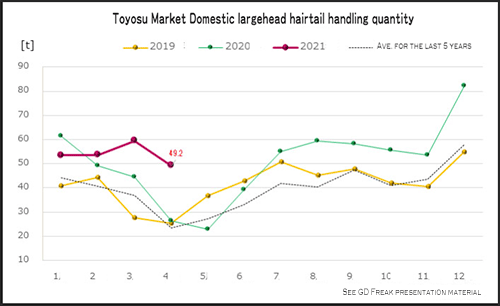
As many largehead hairtails arrived at the Toyosu market this year, the prices should have been reasonable. However, if you judge the price on average, you will make a terrible mistake. Because "very big largehead hairtail" is more expensive and more expensive as its size is larger. This is because the largehead hairtail, which is so-called "kilomono" in the industry terminology, is treated completely differently from the small and thin largehead hairtail.
Can you tell if the "very big largehead hairtail" you see this year is the standard Japanese name tachiuo, the scientific name Trichiurus japonicus, the Largehead ribbonfish, or the Ribbonfish? In Japan, these three species are recognized as the genus Cutlassfish in the sea near Japan. However, Ribbonfish is treated as Trichiurus sp.1 and Largehead ribbonfish is treated as Trichiurus sp.2, and in fact, there is no official scientific name yet.
Largehead ribbonfish and Ribbonfish is 2~3kg thing is let alone, that is not uncommon to become more than 5kg. Actually, I haven't had the experience of comparing these side by side, and I have had the experience of feeling that "Okinawa's large head hairtail has big eyes and is huge ..." at the Chinen market in Okinawa. However, I have never observed this in detail as a Ribbonfish, which is a different species from the hairtail.
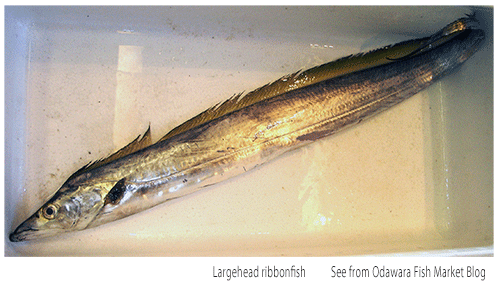
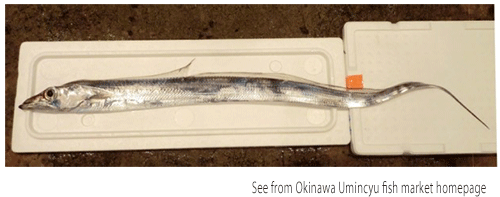
Also, this is a matter of course, but when it comes to fillets and sashimi, it cannot be distinguished, and the very big largehead hairtail you ate may have had no scientific name yet.
Commercialization of very big largehead hairtail
By the way, all three images posted at the beginning of the book were created in April this year. Assorted sashimi with largehead hairtail is "syunsen assorted sashimi" that I proposed a product at the company I was instructing in April. And nigiri sushi and grilled with salt, this is also one made with was able to get cheaper the author "very big largehead hairtail".
"very big largehead hairtail" is a special existence among the largehead hairtails commonly known as "Kiromono", and the real thrill of it is the grilled fish dish that cannot be tasted with a thin largehead hairtail. Below is a description of the fillet work process for grilling largehead hairtail with salt.
| Work process of fillet of largehead hairtail (method of removing internal organs without cutting open the abdomen) | |
|---|---|
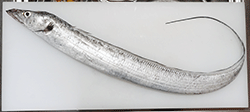 |
 |
| 1,This is a very big largehead hairtail. I couldn't weigh it because it was too long to fit on a 1,200 mm wide cutting board, but I guess it weighs around 1.5 kg. | 6,The point is to remove the internal organs from the abdomen while keeping them on the head. It is important to be careful not to leave the internal organs in the abdomen. |
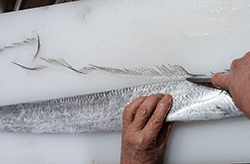 |
 |
| 2,First, cut off the long dorsal fin. | 7,The internal organs could be easily removed without cutting open the abdomen. |
 |
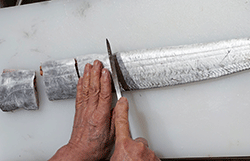 |
| 3,Using the hamoto of the Deba knife, make a notch near the neck of the largehead hairtail and cut off the spine. However, keep it only in the upper half on the back side, and do not make a cut in the lower half on the abdominal side. | 8,Since it is a very big largehead hairtail, it will be large enough to be eaten even if it is cut with a slightly narrower width. The knife must be tilted at an angle so that it looks as thick as possible. |
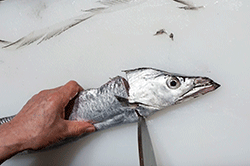 |
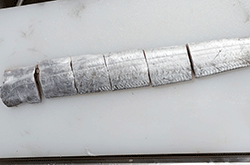 |
| 4,Make a notch on the abdomen side at the tip of the Deba knife. However, only 1 to 2 cm near the pectoral fin is not consciously cut and left. | 9,Five fillets were made from the head side, but the tail part after that is not used as a fillet, but as a material for sashimi and sushi. |
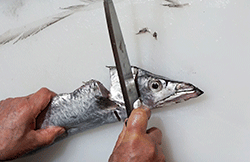 |
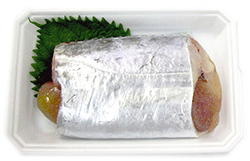 |
| 5,Place the hamoto of the deba knife on the head of the largehead hairtail and press it firmly, pull the body with your left hand, and separate the head and body. | Very big largehead hairtail fillet |
A fillet with an uncut abdomen of a largehead hairtail has a good shape even when baked, so it is basic not to make a cut in the abdomen. Because after dropping the head, if you use a tool such as chopsticks to squeeze out the internal organs with the tutugri method, you may damage important fish eggs at this time, so this method is recommended because it is easy and easy.
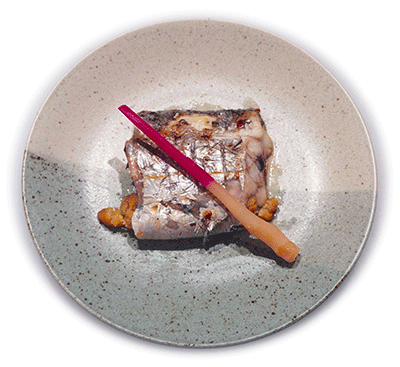
Next is the utilization of the tail part that remains after making the fillet. Since the tail part is thin and has few edible parts, it is difficult to eat deliciously even if it is grilled with salt as shown in the above image. Therefore, it is better to use sashimi or sushi for the tail so that you can eat deliciously even in thin and thin parts, and if you use aburi (searing), the flavor will increase.
| largehead hairtail aburi Nigiri sushi work process | |
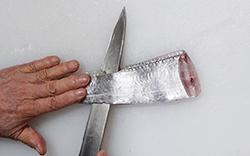 |
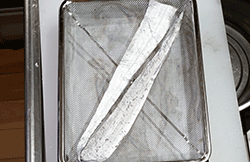 |
| 1,Using a yanagiba knife, cut open toward the end of the tail fin so that it slides on the central bone in the manner of daimyou disassembling. | 5,Place the tail of the largehead hairtail on the net with the skin facing up. |
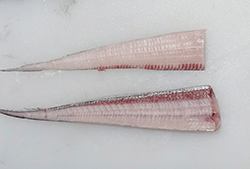 |
 |
| 2,The tail of the largehead hairtailis two pieces disassembling. | 6,Unless only the surface is quickly seared with strong heat, freshness will not remain in the fish meat of the thin largehead hairtail. |
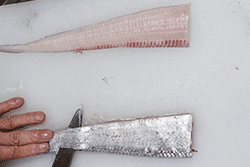 |
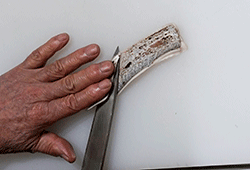 |
| 3,With the central bone down, use a yanagiba knife to slide it toward the end of the tail fin. | 7,The largehead hairtail is easy to come off the skin, because we want taking advantage also seared surface, rather than sogitsukuri, dare to usutsukuri from the surface of the skin. |
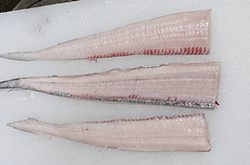 |
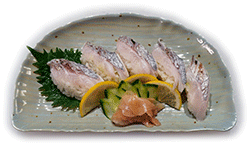 |
| 4,The tail of the largehead hairtail is made into hree pieces disassembling. | The largehead hairtail seared nigiri sushi is completed |
The profit of the largehead hair tail depends on how to use the tail part
What to do if it is not a very big largehead hairtail is basically the same as how to handle it, only the difference between large and small. For example, what should you do with a largehead hairtail for sashimi that is not a "kiromono" like the one in the image below, but is of a reasonable size and has a solid silver guanine layer?
| Commercialization of fishing largehead hairtail | |
|---|---|
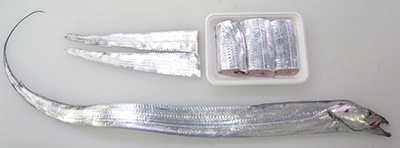 |
|
| 1 Commercialization image of fishing largehead hairtail: Make the head side a fillet and the tail side three pieces disassembling | |
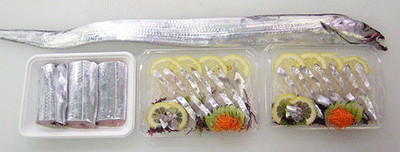 |
|
| 2 Commercialization image of fishing largehead hairtail: Make the head side a fillet, and make the tail side sashimi or sushi | |
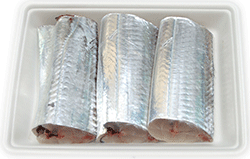 |
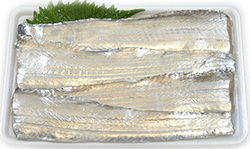 |
| Fishing largehead hairtail 3 slices of fillet | Saku shape for sashimi of fishing largehead hairtail |
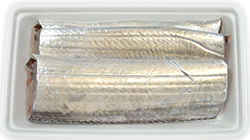 |
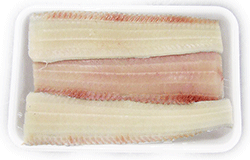 |
| Fishing largehead hairtail 2 slices of fillet | When the silver skin is coming off, to products for the fly to show the fish meat |
One thing to keep in mind when selling largehead hairtail fillets is that the head side of the largehead hairtail has a thin back and the abdomen is round and thick. For this reason, when placing fillets on a tray, it is advisable to make sure that the belly is on the top and the back side is on the bottom. These small details affect sales.
Furthermore, it is important not to put the thick part on the head side and the elongated thin part on the tail side in the same container for sale. This is because if you include a largehead hairtail fillet, which is very different in usability depending on the part, it will create a cause that bothers your cooking image.
The profit of largehead hairtail depends greatly on how much the tail side, which is less valuable than the head side, can be utilized without waste. It is no exaggeration to say that the hairtail's profits are there, how to handle the tail, which is slender and thin.
Delicious fish largehead hairtail of fat plenty
By the way, I would like to finish this month's issue soon. Since the largehead hairtail is a long, thin silver fish, some people may think that it is a "light-tasting fish", but that is a ridiculous misconception.
The largehead hairtail contains 1,400 mg of polyunsaturated fatty acid DHA in 100 g and 970 mg / 100 g of EPA, and the amount of fat is 20.9 mg / 100 g, which is higher than 16.5 mg / 100 g of protein, that is the fish of fat plenty that has an unusual structure.
In other words, a fish with such a fat structure is a "delicious fish". Soft fish meat that does not make you feel so fat is one of the fish that professional chefs like because it can be applied to any cooking such as roasting, simmering, and frying.
There is no doubt that the "very big largehead hairtail", which was previously traded at a high price, has been landed more and the price has been improved this year. The months after June are also the season when the arrivals are particularly high, and it should be considered that the opportunity has come to handle the valuable "very big largehead hairtail". We hope that the sales expansion of largehead hairtail will gain momentum by referring to the contents of this month's issue.
| Please access the following URL if you want to secure using SSL. All pages in the site will be secure pages. |
https://secure02.blue.shared-server.net/www.fish-food.co.jp/message english 6.2021.html |
An opinion and the communication are to iinfo@fish food times
Date of updating 1 Jun. 2021
